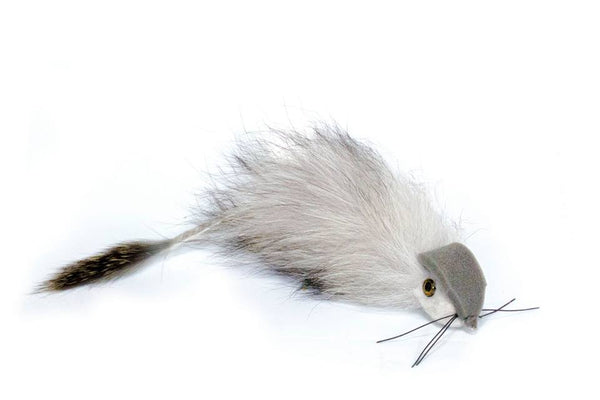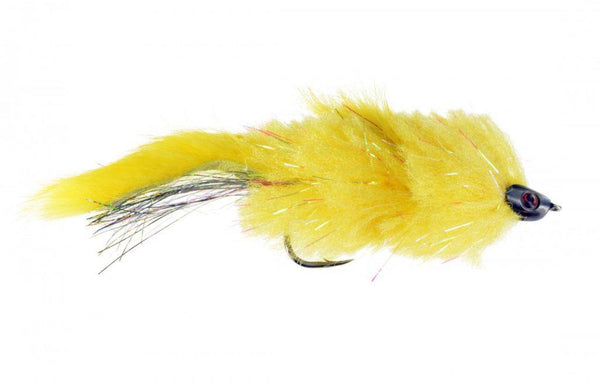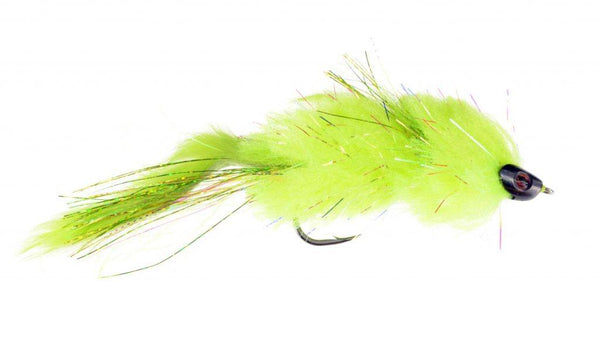Summer pike fly fishing tactics.
Catching a pickerel, pike, or musky on a fly rod is an intense experience that quickly translates into obsession.
There are only a handful of fish that I can say I’m obsessed with targeting on a fly rod.
Trout are at the top of my list, but any of the fish within the esocidae, or esox, family come in at a close second.
Having populations of chain pickerel and Northern pike in the same waters I fish regularly has helped boost my obsession with these vicious predators.
Although pickerel are a thrill to catch, they lack the potential to reach the length and weight that Northern pike grow to.
Spring and fall are the typical seasons when big pike are most vulnerable to a fly angler, but I can’t help but target them all year long, summer being no exception.
These tips will help you dial in summer pike within your local system.
Tune in to their feeding habits.
Northern pike are extremely sensitive to changes in atmospheric pressure, and in turn, their mood also changes frequently.
As anglers, we prefer pike to be in an aggressive mood so they will strike a fly without consideration.
Anyone who targets pike knows this is not the case for the majority of the time spent fishing for them. Pike are notorious for following a fly from the banks to the boat without taking a swipe at it. Instead, they inspect your fly, as if counting the number of feathers and strands of flash you used to tie the streamer undulating before its face.
Some people think pike “will eat anything," but this couldn’t be further from the truth. Pike have intricate feeding patterns directly related to their ever-changing mood and appetite.
The early summer is a time when smaller and mid-sized male pike are quite active, especially near spring spawning areas.
The larger female fish are typically still resting from spawning activity during the end of May until about mid June here in the Northeast. The mood of the large females is generally negative at this point, but that begins to change as the water temperature warms above 50°F.
It's at this point that pike will forage on other fish, frogs, snakes, ducks, and rodents such as mice and muskrats.

Zukowski’s Wharf Rat, available through Catch Fly Fishing.
This time of year is when fly fishing for pike with top-water flies is at its peak. I designed a large articulated muskrat pattern, Zukowski’s Wharf Rat, specifically for top-water predator fishing.
Casting the large muskrat pattern onto steep, muddy banks and stripping it into the water can be a deadly tactic from mid June through the end of September in the Northeast.
Aside from using top-water flies, streamers in the 4- to 12-inch range work throughout the summer when fished on a floating or intermediate line.
I like to tie my streamers to imitate the available forage within the river system or lake I'm fishing, as opposed to using an attractor pattern.
Perch, smallmouth bass, and trout are key prey items for pike in my local water, so naturally I tie a lot of flies in yellow/black, green/black, pink/white, and brown/black colorations.
Deduce the proper locations.
Early to mid summer can be extremely rewarding if you target fish in the right location, with the proper tactics.
In June in the Northeast, male fish will be active within the spawning bays and just outside of them.
Water temperatures rise into the upper 40°F and lower 50°F range, and the overall mood of the pike shifts from spawning to a focus on feeding.
During the early summer, fish tend to lie on steep, rocky drop offs with sunken trees, large boulders, or tributaries entering the main stem of the river or lake. These areas provide an ideal ambush point for pike looking for prey, such as a perch or bass moving along the drop off, or a frog, snake, or muskrat entering the water from the shore.
Water clarity is another factor to consider when targeting pike in the summer.
If there's a day where the river is off color and clarity is minimal, try fishing large black, olive, or purple patterns.
If fishing a large river system, try targeting fish where tributaries enter the main stem, especially after a storm. This situation can translate into a buffet for pike due to the large amount of prey being washed into the river. When the water temperature warms up in large rivers, the pike will move into the depths of the main stem. Their location at this time is mostly associated with submerged structure. Weeds, downed trees, stumps, rocks, foam, lily pads, grasses, and docks all provide the cover pike need when ambushing prey.
These are the classic locations pike fishermen target throughout the summer. While these areas bring fish into the net, they also become the most pressured locations on a river. Do not be afraid to cast into the “B water” while working the typical pike haunts.
The B water is where I will hook into some of my largest pike of the season. If the pond, river, or lake is a popular spot among pike fishermen, I believe the fish will post up in less likely ambush points in order to avoid being hooked.



Pike’s Picnic (available through Catch Fly Fishing) is ideal for deep-water situations.
If pike are not being caught off the banks during mid summer, try focusing on deeper sections of the river or lake with a full sinking line and heavy fly. I designed a fly called Pike’s Picnic (available through Catch Fly Fishing) for reaching the deeper water when weather conditions are extremely hot or cold. Fish-Skull Baitfish Heads provide the weight needed for the fly to reach the deep, cold water that pike inhabit during the middle of the summer.
Although the takes may not be visual, they're typically much more aggressive than those of pre-spawn fishing, where fish take a fly lightly when fished at a similar depth.
Dial in your cast.
After finding the fish, knowing how to cast to them is an important piece of the puzzle.
Oftentimes people will bring their boat too close to shore in order to cast toward a specific piece of structure that looks good, only to spook a fish from its lair.
To avoid this from happening, make long casts and use a good line that has a proper taper to turn over the large flies.
If you must sacrifice the size of the fly you are fishing in order to get a longer cast in, then do so. Casting close to, or onto, the banks if possible is crucial at when summer pike fishing.
During the late morning, especially after a cold night, pike will be in shallow water close to the bank seeking warmth from the sunlight.
This location also happens to be a prime ambush point.
Again, anything that swims along the drop off or comes off the bank is an easy meal for a pike in this position. This is when a flawless cast comes into play.
Read the weather.
Once the season progresses and the pikes' metabolism picks up, fish eat early in the day and late in the evening.
Overcast and rainy days can also be very productive during the summer period. If there's fog in the morning, call into work sick.
Again, pike are very sensitive to changes in weather, which is why I suggest compiling notes in order to better understand feeding habits your local waters.
Practice proper fish handling.
During the summer, pike are very susceptible to mortality.
In order to avoid this, use barbless or micro-barbed hooks, try to fight fish for as little time as possible, use a good rubber net, and keep them in the water when handling them.
While pike aren’t as fragile as musky are, they should still be handled in the same manner.
Be aware of high water temperatures during mid to late summer, especially if you are south of New England, where rivers, lakes, and reservoirs warm quickly to dangerous levels for fish.
When your local water reaches into the high 60's°F to low 70's°F, consider targeting other species that are less at risk in warm waters such as largemouth bass or the pike’s cousin, the chain pickerel.
Lastly, never subject a fish to more time out of the water than necessary. Yes, pictures of fish are cool, but dead fish are not.
Record your progress.

Photo and drawing by Gunnar Brammer of Brammer's Custom Flies. If you chase freshwater predatory fish on the fly, you should buy Gunnar's limited edition Signature Tyer Series box from Postfly.
An important piece of pike angling is recording information.
Any angler has at least a handful of important dates memorized that correlate to good fishing.
If you want to be consistent and dial in a specific fishery, you'd better keep track of ice-out dates, water temperature, spawning activity, summer weed growth, available forage, and weather patterns.
This is the only way to land big fish annually.
A week can make a major difference in the Northeast, or anywhere else where pike exist, so getting on the water while conditions are best is essential.
Have fun!
Chasing pike during the summer is a great option when trout streams warm up.
While bass fishing is another summer favorite of mine, the possibility of landing a fish over 30 inches and 10 pounds is more appealing if given the option.
Tying flies for pike allows me to gain more insight into the behavior and feeding habits of the fish, as well as what triggers they respond to. Fish-Skull Articulated Shanks, Baitfish Heads, and Living Eyes are perfect for adding realistic movement and lifelike elements to my flies.
On that note, go tie some flies, fish them, repeat.
Want more articles like this?
Join the Flymen Mailing List at the bottom of the page!
About Jon Zukowski:
Jon is an angler, writer, and professional fly tyer who resides in the White Mountain region of New Hampshire. He began fly-fishing at the age of 5 on his home river, the Pemigewassett. He's a member of the Flymen Fly Tyer Program, The Uncommon Angler, and a signature tyer for the Catch Fly Fishing Fly Design Team. His patterns range from small nymphs to streamers, but he has an infatuation with large, articulated creations. Jon enjoys traveling the Northeastern United States and beyond to target a variety of species including trout, pike, bass, musky, and more. Aside from fishing and fly tying, Jon likes drinking good beer, seeing live music, and cooking meats over a fire. You can follow Jon on Instagram at @jonnyz90, or on Facebook: Jon Zukowski & The Uncomon Angler. If you'd like to get your hands on some of his fly patterns, find a Catch Fly Fishing dealer near you or visit www.catchflyfish.com.


Hi
I find those pike flys very unique and very new look. I just wonder if you make them yourself or if you are just a distributor? I would love to sell it in Ireland
Many thanks
Alex
Https://fishinglures.ie
Hi, I’m Natalie from Social Buzzzy checking in. I’ve come across a revolutionary tool for Instagram growth and couldn’t help but share it with you!
Social Growth Engine offers an amazing tool that elevates Instagram engagement. It’s easy:
- Just focus on making fantastic content.
- Economical at just below $36/month.
- Safe, powerful, and Instagram-friendly.
Having seen fantastic results, and I believe you will too! Elevate your Instagram game today: http://get.socialbuzzzy.com/instagram_booster
Best wishes your success,
Natalie from Social Buzzzy
Thanks for the great article! Very helpful for a beginner such as myself. If you could please put my email on the mailing list that would be great.
12LB tippet is rediculous for pike fly-fishing. If I am not using wire, I use 120lb fluorocarbon, and have caught up to 20 fish on the same tippet. Having said that I had a mere 3lb fish almost slice through this tippet on one freak occasion, and also witnessed a clean “bite-off” on 90lb fluorocarbon on another. Even wire is not 100% reliable.
Informative article. I’m a bit surprised you didn’t discuss the type of leader/tippet you use. My limited experience catching northern pike in Canada revealed that a wire leader/tippet seemed to be a must? Twice a wily pike bit through 8-12 pound tippet like “butter”, a nice clean cut, too.
Leave a comment